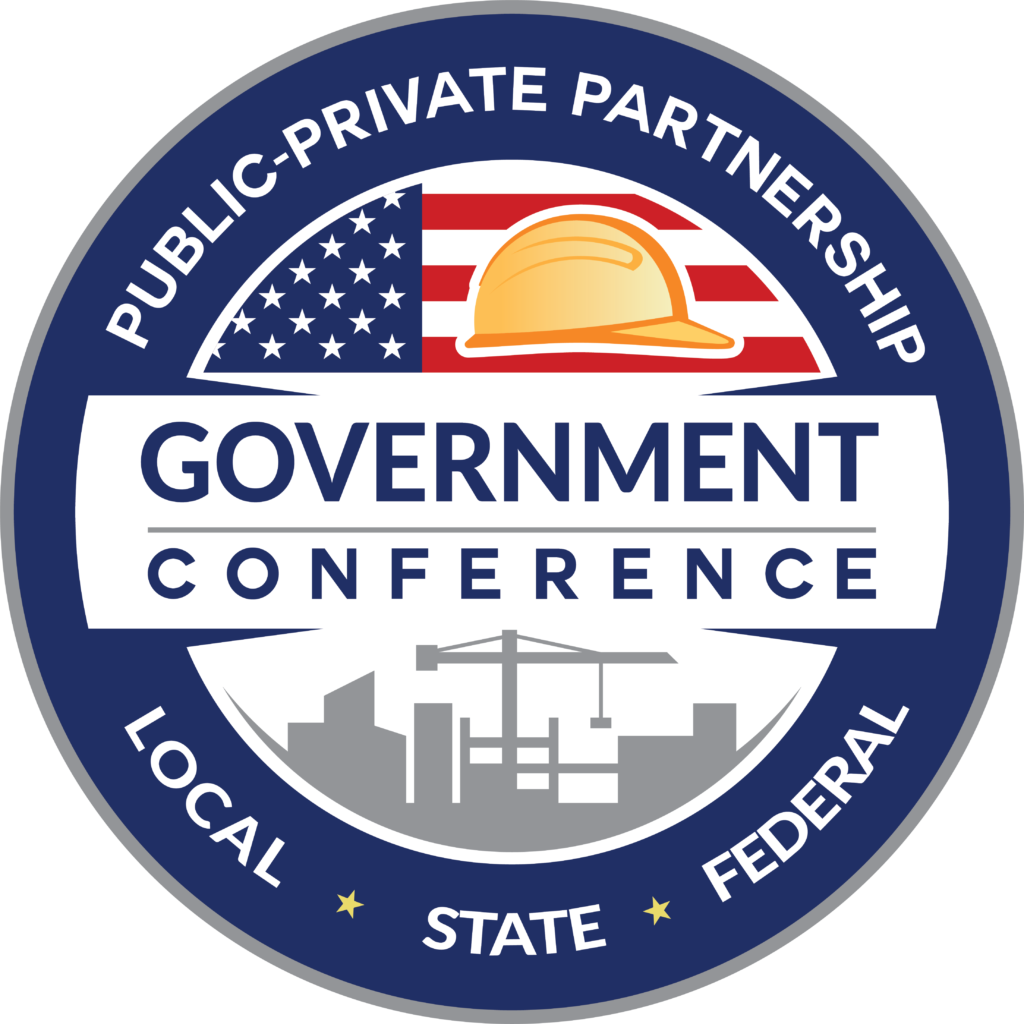
Program
With keynotes, case studies, panels, workshops, and diverse networking opportunities, Conference attendees will deepen their understanding on the key principles behind P3s and other alternative delivery methods, and the role they can play in delivering essential transportation, health, defense, social, and water infrastructure projects.
The conference agenda has been designed to help you plan and procure successful P3 initiatives, understand best practices in selecting and negotiating with prospective partners, and take steps to ensure project success.
Over 80 leading practitioners will present their firsthand observations of P3 projects of all sizes from around the country, and detail the P3 arrangements employed by agencies to develop, maintain, and repair critical infrastructure systems.
P3 training and case studies included in this year’s program will include consideration of the following sectors:

Transportation and Rail

Public Buildings and Social Infrastructure

Resiliency and Environmental Planning

Water, Wastewater, and Stormwater

Airports

Energy
PROGRAM OVERVIEW
The P3 Government Conference offers the opportunity to learn, discuss and share evolving concepts and state-of-the-art techniques in delivering partnerships.
A comprehensive list of best practices and lessons learned will be presented through a series of seminars, panels, and workshops in the program. With an emphasis on what owners should consider when looking at P3s, including:
Pre-Award Discussion Topics:
- Assessing merits, risks, and the feasibility of a P3 project
- System and facility considerations: identifying what works as P3 and what does not
- Custom structures and options for small communities seeking partnerships
- Special tactics for smaller projects
- Defining project requirements and identifying appropriate project delivery models
- Meeting deferred O&M challenges
- Best practices in procurement
- Understanding credit impacts P3s can have on an institution’s rating and debt capacity
- Political considerations for developing and implementing P3 projects
Teamwork and Collaboration Topics:
- How to score, select, and negotiate with prospective partners
- How to set service standards and define performance metrics
- The importance of early engagement with private and public stakeholders
- Integration tools and techniques to enhance collaboration
- Owner roles and responsibilities in executing a P3
- Risk balance and expectation management
- Contract administration and analysis
Advanced Project Delivery Topics:
- Risk identification, mitigation, and tradeoff strategies
- Asset monetization of non-core infrastructure assets using P3s
- Financing solutions and value propositions under the P3 Model
- The influence of design within the P3 process
- Value creation from transferring operations and maintenance
- Latest innovations and life-cycle efficiencies in P3 delivery
Additional Topics to be Covered at the P3 Government Conference:
- Policy workshops on public-private partnerships
- Sessions meant specifically for smaller projects in the $5 to $25 million range.
- Consolidation and other options available to smaller communities.
- Strategies on bringing community stakeholders together to move P3 projects forward.
- Real project P3 experience from the public sector on what worked and what didn’t.
- In-depth examinations of recent major P3s.
- Project Turnover: What happens the end of project? Reversion to owners and managing the transition into the public domain.
NEW SESSIONS ADDED
New Sessions Added to this Year’s Program:
Planning And Political Will – How to win political and local support with successful communication plans.
Attracting the Right Partner: Procuring P3s – A look at best practices in selecting and negotiating with prospective partners and keys to managing public-private partnerships.
Just what is a P3 Today? – Does a long term O&M contract or a DBO qualify as a P3? What are financing approaches? Does it even have to include financing?
Asset Recycling – Rethinking The Asset Portfolio – Is asset recycling an effective method for the public sector to fund new infrastructure. What are the costs and considerations that accompany government leasing revenue generating assets. Does infrastructure ownership or investment better serve the public interest?
Decaying Federal Projects and How States Can Pick Them Up – We examine Federal projects that States need done. What are the solutions for suspended or stagnating water and transportation projects whose completion are critical to communities.
The Role and Responsibility of the Private Investor – A candid discussion with infrastructure investment funds and capital allocators on the public-private partnerships.
Low Hanging Fruit? P3’s and Specific Opportunities for Energy Resiliency – A closer look energy management and community choice aggregation as important new trends and potential resiliency measures for municipalities.
P3 ROUNDTABLES

The P3 Government Conference will be hosting roundtable conversations on 16 P3 topics. Discussions will last approximately 25 minutes and are meant to be open and candid exchanges where participants can ask questions and share experiences.
Facilitators will guide discussions by presenting case studies, targeted issues, and topics shaping the P3 landscape. During the 2 hour session new discussions will begin every half hour and participants are invited to all table topics of interest.
Roundtable topics for this year’s program will include:
Table 1: P3 Risk Balance and Expectation Management
One of the hallmarks of a successful P3 project is the sharing of risk between the public and private sectors. Each sector would prefer to reduce their risk on the project, but there are serious cost impacts when the other sector absorbs more risk. Where can the balance be stricken and how can you be sure you have identified all the project risk categories for which transfer is an appropriate deal point? We will look at how public and private sector participants can work together to establish expectations and strike a fair balance for risk transfer between them on P3 jobs. The table will address how risk transfer in design and construction costs, operation and maintenance, and politics can impact the value for money analysis. We will consider risk allocation between the private and public sectors, as well as amongst the various members of the private concessionaire team. Finally, once the appropriate risk categories have been identified, we will discuss the different vehicles available to implementing risk transfer.
Table 2: P3 or Not to P3: Identifying the Appropriate Project Delivery Mode
How are US public agencies determining the optimal delivery model for their projects? Not every project can or should be delivered as a P3. Before initiating procurement for a P3 project, public agencies typically undertake a business case analysis to determine whether a P3 is likely to yield a higher public benefit than a more traditional procurement method. As the US P3 industry develops, public agencies have had to adapt international evaluation methods to fit US market characteristics and regulatory requirements. We will discuss pre-procurement methods and consider the applicability of P3 methods to major categories of infrastructure projects currently in the pipeline.
Table 3: Using Tax-Exempt Bonds in P3
For years tax-exempt financing has been the preferred means to finance public facilities. This roundtable will address the issues involved in using tax-exempt debt in public-private partnerships, and compare and contrast structures involving tax exempt debt vs. conventional debt and equity. The conversation will also examine the impacts of the financing structure on project cost, project delivery, and long term operations and maintenance.
Table 4: From Idea to Implementation: The Role of a Project Champion in Building Internal Partnerships
Between the first idea for a P3 project and the eventual ribbon-cutting lie many obstacles. P3 projects are still new and different to many people. They require new processes, new ways of thinking, new legal and financial models, and new risks. A project champion is essential to navigate those obstacles and build a team and process that will maximize the chances for success. The project champion must understand enough about both the traditional process for new development and the new opportunities offered by the P3 model to bridge those worlds and to help projects adapt and remain flexible through the design and implementation phases. This roundtable is designed to empower potential project champions to build the internal partnerships needed to take a project from idea stage to implementation.
Table 5: Community Engagement Is Not an Afterthought
Critical to the success of any P3 is a strong commitment to stakeholder engagement, communication, and transparency. Including stakeholders early in the public planning process allows for community engagement and an opportunity to facilitate a successful P3 program based on public support and involvement. Here we examine how both the public and private partners can approach the dialogue with the ratepayers, business groups, and community shareholders for the best chance at a win-win-win solution for the public partners, private partners, and the community.
Table 6: How to Maximize the Procurement Process
To attract P3 consortium partners (developers, investors, contractors, and service professionals), the public sector must instill confidence in the procurement process and house the necessary expertise to support a pipeline of P3 projects. This table will consider the various methods that agencies can implement to use this initial phase of the P3 process to their advantage—not only to generate interest from the private entities in their project but also minimize and avoid any negative issues associated therewith.
Table 7: Want to Seriously Consider a Water P3? Better Understand What Makes This Market Sector Tick
Water sector owners “hear the P3 buzz” created by other sectors and are looking for useful information and guidance. Unfortunately, P3 interest in the water sector is often blindsided from the depth and breadth of ongoing narrative in the larger P3 community and by precedents in other market sectors and geographies. The path forward is simply the water sector needs to create and lead the water sector P3 narrative. The water sector has some unique features that need to be fully understood, and these features are key to the best practices for the evaluation, procurement, contracting, and implementation of a water P3. This discussion will focus on these water sector features and why they are so important.
Table 8: Off Balance Sheet But on Credit
Among the many touted benefits of potential P3 projects is the ability to keep debt off the balance sheet. But just because it is off the balance sheet, does this mean rating agencies will consider it to be off credit as well? Chat with a ratings analyst who will discuss her approach to evaluating a P3 project’s impact on credit rating.
Table 9: O&M Risk Issues in P3 Concessions
This table will focus on the last costs of a P3 concession: the O&M phase and its insurance line item. We will discuss how failure to anticipate insurable coverage issues and address insurance related challenges can put the O&M concession phase at unanticipated risk. Issues such as the impact of optimism bias in anticipating future insurance costs, the insurance downsides of deferred maintenance, and the revealed coverage gaps when being jointly and severally liable with the public offtaker will all be considered in this discussion.
Table 10: Cost of Finance – Does it Really Matter?
This roundtable will focus on understanding the cost of financing. While some disregard P3s outright arguing that tax exempt financing can be cheaper, there are recent examples that have demonstrated otherwise. In this discussion, close consideration will be made to when the cost of finance is relevant and the role of other key factors that impact the value of money in a P3.
Table 11: Defining and Maximizing Value in a Public-Private Partnership
The deal structures of today are multivariable equations, not off-the-shelf deal structures that are bid on spec and valued exclusively by price. As such, the most successful projects are implemented when an institution defines project values, creates framework that prioritizes and normalizes variables, and drives competition by providing developers with sufficient information and flexibility to be innovative. This roundtable is designed to empower institutions to become the strongest owners possible by defining project requirements, weighing delivery options against risk, and selecting a development structure that best fits their goals prior to soliciting private partners.
Table 12: Making Partnerships Work
When a P3 contract is signed with a private party, the work of the partnership begins, and both private and public parties have to live up to their responsibilities. Contracts attempt to identify and plan for the potential events that could occur during the life of the P3, but they can rarely imagine all events into the future. This table will present the fundamentals of and challenges to contract management; demonstrate methods for streamlining documentation; examine P3 contract requirements; discuss enforcement policies; and provide techniques for amending, renegotiating, or terminating contracts.
Table 13: PRE-RPF Done Right: Best Practices for P3 Procurement Success
Are you considering a P3 delivery but not sure where/how to start? Concerned about attracting private sector interest? This roundtable will address pre-RFP activities for a municipal entity to consider, a procurement road map to then follow, and finally the individual steps to prepare and implement a P3 from procurement through award, commercial/financial close, delivery, and operations.
Table 14: Winning P3 Formulas for Infrastructure Projects
P3s are moving up the agenda in the North American market but the definition of what a P3 is can be variable and confusing. This roundtable discussion will navigate through the confusion by outlining the different P3 models and discussing the key components and attributes of successful P3s currently underway in the U.S. With each model having its own risk/return profile, we will discuss and review the risk/reward continuum in each model and examine examples of projects that illustrate successful P3 contracts.
Table 15: Value Creation from Transferring Operations & Maintenance Risk
One of the biggest differences in a P3 delivery is the long-term operations and maintenance obligations the private sector is responsible for delivering. Many public sector sponsors have stated that operations and maintenance services as one of the biggest reasons for considering a P3. Join a discussion on the importance of operations in a P3 and how the right structure may improve service quality.
Table 16: Outsourcing Arrangements – How Can Best Practice Asset Management Support P3?
Over the years many different outsourcing contracts have been placed all aiming to deliver value for the asset owner. Was the outcome of these contracts always what the asset owner intended? Could building the outsourcing arrangements based on the sound principals of asset management help improve the operation of these contracts and ensure the outcome is aligned to the asset owners objectives.
NETWORKING ACTIVITIES
Our audience of public agency, industry, and P3 leaders provides a unique opportunity to network with project delivery experts, owners, and prospective partners in a development focused forum. This year’s conference offers three days of scheduled events designed for attendees to network and connect!
The program includes multiple daily breaks, daily happy hours, one-on-one meeting areas and specific sessions designed for you to meet new industry faces and reconnect with old colleagues.
Special networking events are also planned and will be announced as we near this year’s event.

Stay Informed
Want to learn more? Sign up here to stay up-to-date on industry news and our latest program developments.



